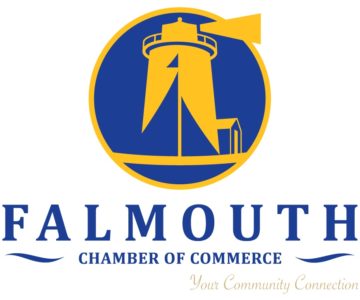By Jay Norton
A 2017 report by the Blue Economy Project indicates that Cape Cod’s 1,872 maritime businesses employ 20,530 people and generate about $1.4 billion in annual gross revenue into the local economy.
“Blue” (as in “water-dependent”) is a label proposed for the working waterfront by Cape Cod Chamber of Commerce in an effort to define a sustainable future for the region. The Blue Economy Project, backed by a Seaport Economic Council grant, is informed by similar initiatives worldwide that leverage and expand the economic potential of the ocean.
In Cape Cod’s case, advancing the Blue Economy means investing in and preparing workforce for the tourism, commercial fishing, marine research, and other businesses that can only exist at the coastline. Also, there is a recognition that if we do not protect the environment and infrastructure required for local industries, economic potential becomes limited. This is especially true in light of the challenges posed by sea level rise and increasingly damaging coastal storms.
What is coastal resiliency?
Although forecasts are uncertain, relative rise in sea level is well documented and expected to continue in the future. Erosion, saltwater intrusion, storm surges and king tides are being made worse by rising sea level. Local engineers and scientists are working on risk management solutions that balance the need to protect life and property while also protecting the environment. Increased environmental standards require innovative approaches informed by the best available science.
Coastal resiliency has emerged to address ecological functioning, human behavior, engineering design, and community sufficiency in the face of potential hazards. It’s defined by the United States Army Corps of Engineers as “the ability to anticipate, prepare for, and adapt to changing conditions and withstand, respond to, and recover rapidly from disruptions.”
Coastal resiliency adopts a “multiple lines of defense” approach: combinations of natural infrastructure (oyster reefs, salt marshes, seagrass, and dunes), engineered solutions, both “soft” (biodegradable fiber rolls, drift fences, coir envelopes, beach nourishment) and “hard” (revetments, bulkheads, articulating concrete mats), together with policy (buy outs, zoning, and building codes) to reduce the impacts associated with storm events.
Resilient shore
Severe New England nor’easters and seasonal hurricanes can pound our beaches and wash away sand, trees, and sometimes homes. Powerful storms can modify offshore sand bars, creating breaks in local barrier beach systems and allowing a previously protected area to become highly vulnerable – as illustrated by the multiple Chatham North Beach breaks. Beach erosion is a natural occurrence, and there are some that believe the best response is to retreat away from the coast. Others, whose livelihoods depend on protecting the shoreline assets, are more inclined to look towards engineered solutions.
Needless to say, a balanced approach is desired. Integrated shorefront protection measures can not only provide a sense of security for waterfront property owners, but also maintain our beaches for recreational purposes and restore natural wildlife habitat. In our experience, shoreline stabilization methods that work best typically involve a combination of approaches: a “soft” solution or harder “armoring” along with the placement of sand nourishment to replenish sand lost to erosion. Depending on the scale, complexity, and location of the project, local, state, and/or federal environmental permits may be required. A proactive approach that keeps projects at the local level can make the permitting process less costly and less cumbersome, although at times this is unavoidable.
Resilient buildings
The 2013 Massachusetts Hazard Mitigation Plan assessed the value of all state properties potentially vulnerable to coastal erosion and flooding at $7.2 billion in damage replacement cost. Rather than hoping for damages to avoid us, it’s smart to be proactive in building resilience. Understanding the problem is really the most important piece: once a community knows its risk, it can plan to adapt. While there are many different risk assessment tools out there, the Federal Emergency Management Agency (FEMA) flood maps is one tool we refer to most often because it provides a comprehensive compilation and presentation of flood risk data for specific watercourses, lakes, and coastal flood hazard areas. Flood resistant design and construction considerations are mandated by FEMA flood plain management regulations and include:
- Elevation of structure
- Relocation of structure to higher ground
- Foundation types
- Free of obstruction enclosure
- Structural anchorage
- Water resistant materials
- Floodproofing
- Utilities
- Means of egress
- Damage mitigation to adjacent structures and property
In Massachusetts, plans for new or substantially improved buildings located in floodplains and coastal high hazard areas need to be certified by a registered professional engineer to ensure they meet local and state performance standards for minimizing potential flood damage.
Resilient infrastructure
Ongoing maintenance is necessary to ensure that our harbors remain working. is includes both dredging local waterways and keeping waterfront facilities up to date. While silt levels can fluctuate seasonally and with tidal flow, at some point its amount can become excessive, affecting the ecological health of the environment and hindering navigation. Periodic dredging to deepen waterways is a necessary and tenable option in harbor management.
Furthermore, removal of the organic sediment in an environmentally responsible way can be an important part of a beach stabilization or a beneficial re-use effort.
When it comes to planning for resiliency in built environment, adaptive design helps address the uncertainty of climate change. Adaptive techniques involve working sequentially from what is known, thus allowing infrastructure to be built now, with the understanding that the underlying design assumptions might change. This approach is more affordable because it’s turning a long-term problem into a series of short-term solutions.
The sustainability of the Cape’s economy and the livelihood of its residents depend on a viable, working waterfront. The Blue Economy Project with its focus on increasing resiliency of natural resource areas and infrastructure and investing into maritime industries is a timely initiative that sets a foundation for the future.
Jay Norton is a Senior Project Manager at Coastal Engineering Co. Inc. He can be reached at (508) 255-6511 or jnorton@coastalengineeringcompany.com.























